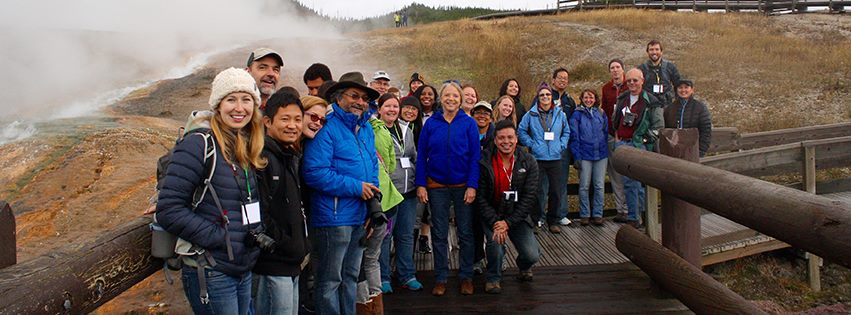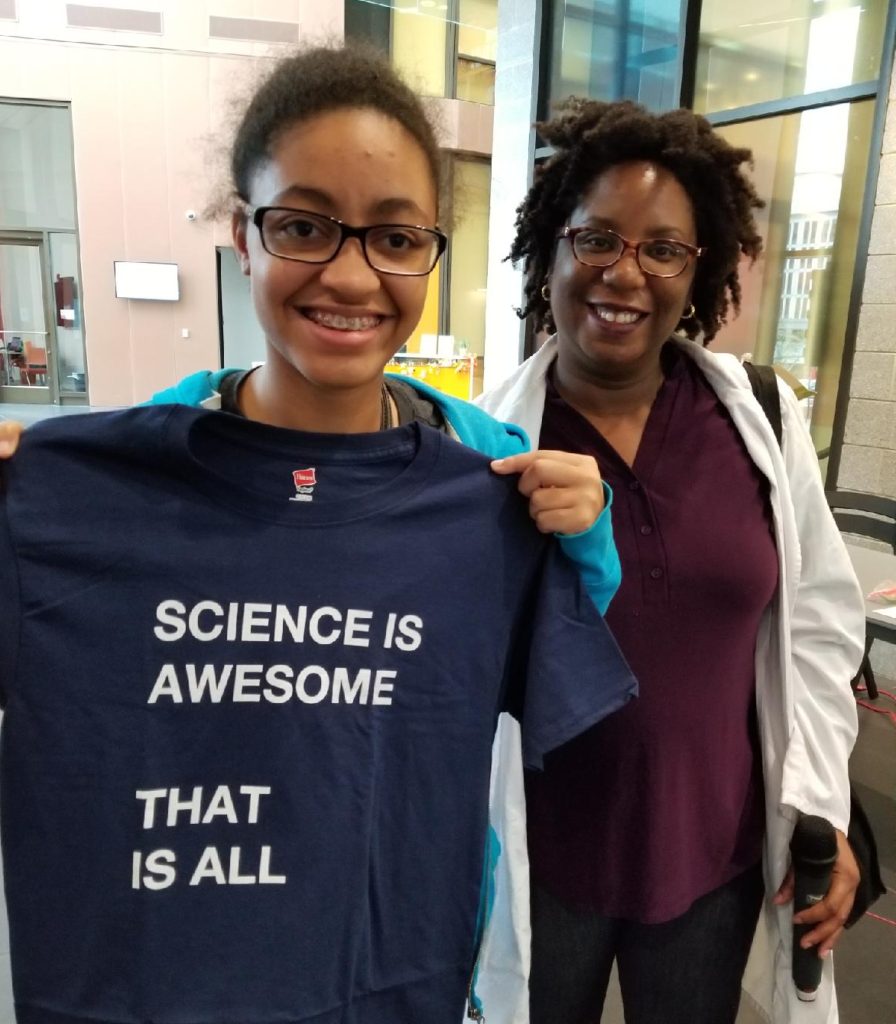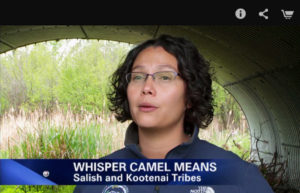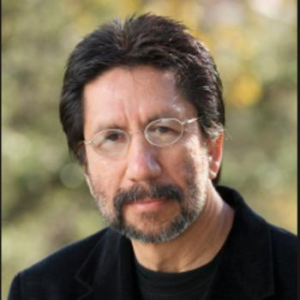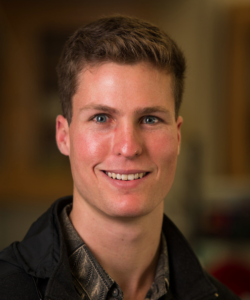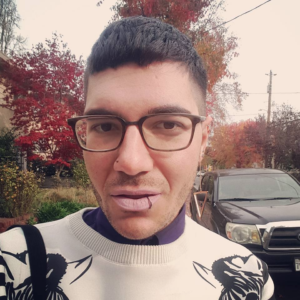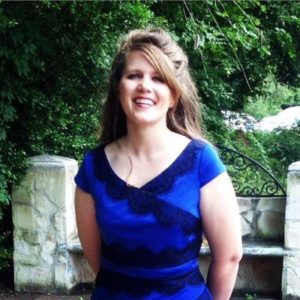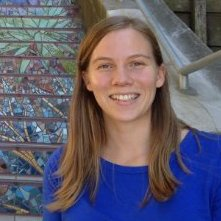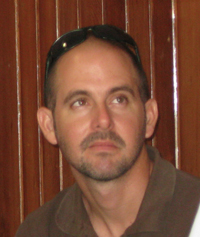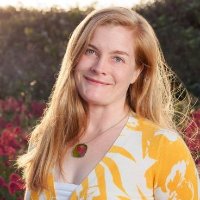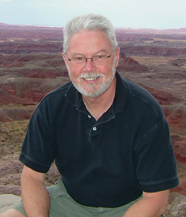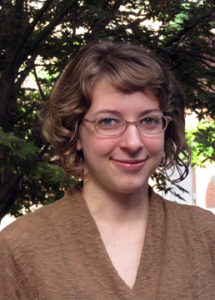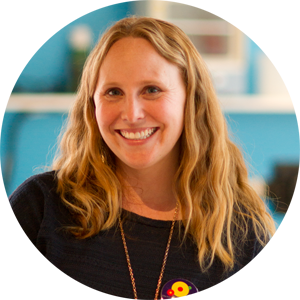Since the COVID pandemic, our coalition has taken a step back from public events and public meetings. But we’re still here! We’re still united in our cause to bring STEM education to families and communities in the US and beyond.
Meet Jorge Ramos
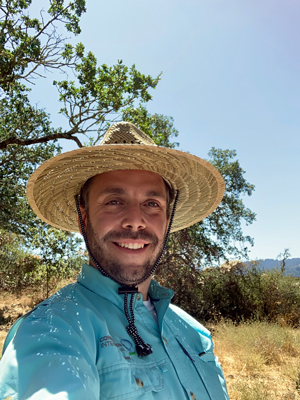
Associate Director for Environmental Education
Stanford, California, USA
Currently working on: Developing a more inclusive environment (classroom, labs, and field work) for POC and LGTBQ+ in the STEM fields
Talk with me about:
- Biology, Earth Science, Ecology, Environmental Education
- K-12 Education, higher education (undergrad/postgrad), Public Outreach
- How do students perceive their professors and what can they do better
- Developing inclusive curriculum development
- Looking for more ideas on creating multimedia activities for outreach
My STEM Story: I was introduced to SACNAS and SEEDS in 2003 when I was a sophomore at UTEP. After attending my first SEEDS and SACNAS events, I saw for the first time all the people that looked like me and sounded like me. This made me realize that a more diverse science is a stronger science!
Projects:
https://vimeo.com/158089103
Meet David Tattoni
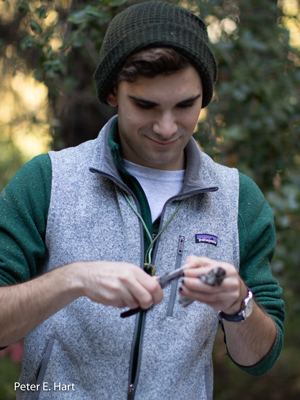
Undergraduate Student, Stanford University
Stanford, California, USA
Currently working on: A bird banding study at the Jasper Ridge Biological Preserve, getting into grad school.
Talk with me about (nearby connections preferred):
- Biology, Earth Science, Ecology, Health, Zoology
- Primary Education (grades K-8)
- Research
- Grad school
My STEM Story: When I was 8, my mom signed me up for a few days of camp at a local nature center over spring break. The first day was spent exploring vernal pools and catching frogs and macro-invertebrates. I’ve always thought of that as the start of my lifelong obsession with ecology.
Meet Ayana Gabriel
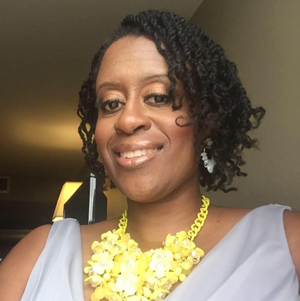
Senior Program Officer
Atlanta, Georgia
Currently working on: Building a STEAM careers apprenticeship program in Atlanta.
Talk with me about:
- Chemistry, Engineering
- Philanthropy
- Programs, academic achievement, youth
How I got interested in STEM: My eighth grade class project for Physical Science. We made an electromagnet using everyday materials. My magnet was pretty strong!
Meet Kaberi Kar Gupta
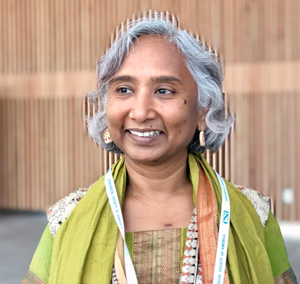
Visiting Scientist at North Carolina Museum of Natural Science
Raleigh, North Carolina, USA
Facebook | Twitter | Instagram
Currently working on: Urban ecology, (focusing on community-based conservation and citizen science in cities)
Talk with me about:
- Ecology, Anthropology
- Higher education (undergrad/postgrad), Public Outreach, Research
- Non-Profits
- Grant writing
- Helping with reaching out to communities, verbal communication, with community members
- Connecting with museums, schools and policymakers
- Minority communities
How I got interested in STEM: My mother and my school biology teachers.
Projects:
I started a community-based conservation project in urban Bangalore to study a nocturnal primate and conservation of biodiversity in cities. I am currently developing a urban pollination project, collaborating with museums, local schools and universities to work in communities. In the past I worked on urban water use and perception of home owners on waterside landscapes in Fresno, CA. My phd work is on behavioral ecology of slender loris in southern India. I also worked as a biologist in a Tiger Reserve before starting my PhD.
Meet Jarrod W. Lockhart
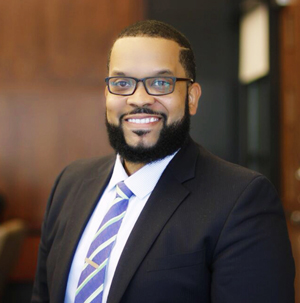
Assistant Director, Morehouse School of Medicine
Atlanta, Georgia
Currently working on: My education doctorate in learning and organizational change at Baylor University.
Talk with me about:
- Computer science, health
- Secondary education (9-12), higher education, Public Outreach, Non-Profits
- Research and grant writing
- Curriculum and Pipeline programs
My STEM Story: A memorable and first STEM moment for me was when I participated in vascular biology and hypertension research at The University of Alabama at Birmingham. My project won 2nd place in the final ceremony. This fuels the passion that I have regarding the importance of pipeline programs.
Projects: My current project includes a $3.2 million dollar federal grant that I wrote and acquired from the Department of Health & Human Services that focuses on health careers exposure for high school and college students. Additionally, the grant provides funding for medical student exposure to public health research. It also provides funding and resources to graduate students that are interested in attending medical school.
Meet Cecilia Tung
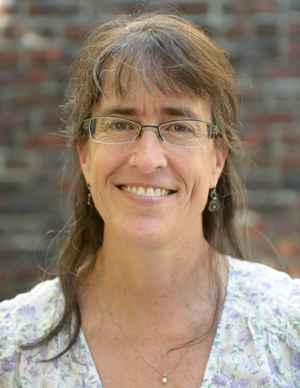
Science Dept Chair, The Northwest School
Seattle, Washington
Currently working on: Finding ways to engage my students in climate science through a physics lens.
Talk with me about:
- Biology, Chemistry, Computer Science, Earth Science, Physics
- Secondary Education (grades 9-12)
- Science curriculum, pedagogy, scientific mindset
My STEM Story: I love to hear students in my school eagerly discussing the science lesson they have just had in class whether it is my physics class, or another subject. The enthusiasm and eagerness in their voices gives me hope for the future.
Meet Jessica Cetz Dzib

Proyecto Itzaes Advisor
Ixil, Yucatán, México
Currently working on: Conservation of Mayan numerology and math with children and young people.
Talk with me about:
- Math and science education in Mayan communities
- Mayan Culture
- K-12 education, public outreach
- Non-profits, grant writing
- Curriculum and opportunities for teachers
My STEM Story: Since I was a child I liked math but it is when I started working as an advisor in Proyecto Itzaes that I had more opportunity and contact with STEM. In 2016 I worked with a PhD student in Mathematics Education at Stanford University.
Meet Rachel Winheld
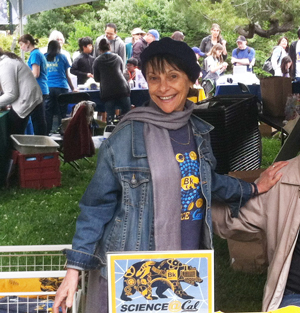
Director, Science at Cal
Senior Analyst, Particle Cosmology Group
UC Berkeley, Berkeley, California
Currently working on: A million projects. Big focus on the upcoming Bay Area Science Festival, and other ongoing STEM outreach activities.
Talk with me about:
- Public outreach for All STEM fields
- Faculty support
- Grant writing (federal and state agencies, corporate sponsorships, and foundations)
My STEM Story: I started working in STEM outreach a couple of decades ago, so there have been many memorable moments. Engaging kids at a farmers’ market in doing a science activity was a memorable moment — they were spending the entire day there because their parents were vendors. The kids were excited about science and enjoyed having something challenging to do during a long day of just hanging out.
Meet Casey Mullins

Undergraduate, Stanford University
Palo Alto, California, USA
Currently working on: multicultural STEM education for high school students.
Talk with me about:
- Earth science & ecology
- Science communication: effective multimedia usage
- Grad school opportunities (I’m interested!)
My STEM Story: I found a love for STEM in the 6th grade learning about geology for the first time. What drew me in was the focus on things so much larger and greater than myself or any one lifetime.
Projects: Most of my work so far has been through the Stanford chapter of SEEDS, a national organization through the Ecological Society of America (ESA). The core SEEDS program components offer hands-on, engaging experiences with ecology that exhibit the relevance and applications of the science. Each experience also provides opportunities to interact with a diverse group of ecologists and other motivated students to both broaden and deepen students’ understanding of ecology and potential careers.
Nominate Someone: COPUS 2019 Paul Shin Award
Nominate a hero in your life!
Deadline is Tuesday, July 30, 2019 at midnight (PST).
Paul Shin Award
Each year an individual or individuals will be selected to receive the Paul Shin Award in recognition of dedication to communicating science to the public, whether in person, in print or online, or a combination. Read the guidelines and nominate now!
From Ants to Grizzlies: A General Rule for Saving Biodiversity
The incredible work of the wildlife biologists of the Salish and Kootenai Confederated Tribes has been featured in an HHMI video. We’re glad to see their excellent work getting more attention! Special kudos to COPUS member Whisper Camel-Means for her excellent science communication skills…
2018 COPUS Unconference
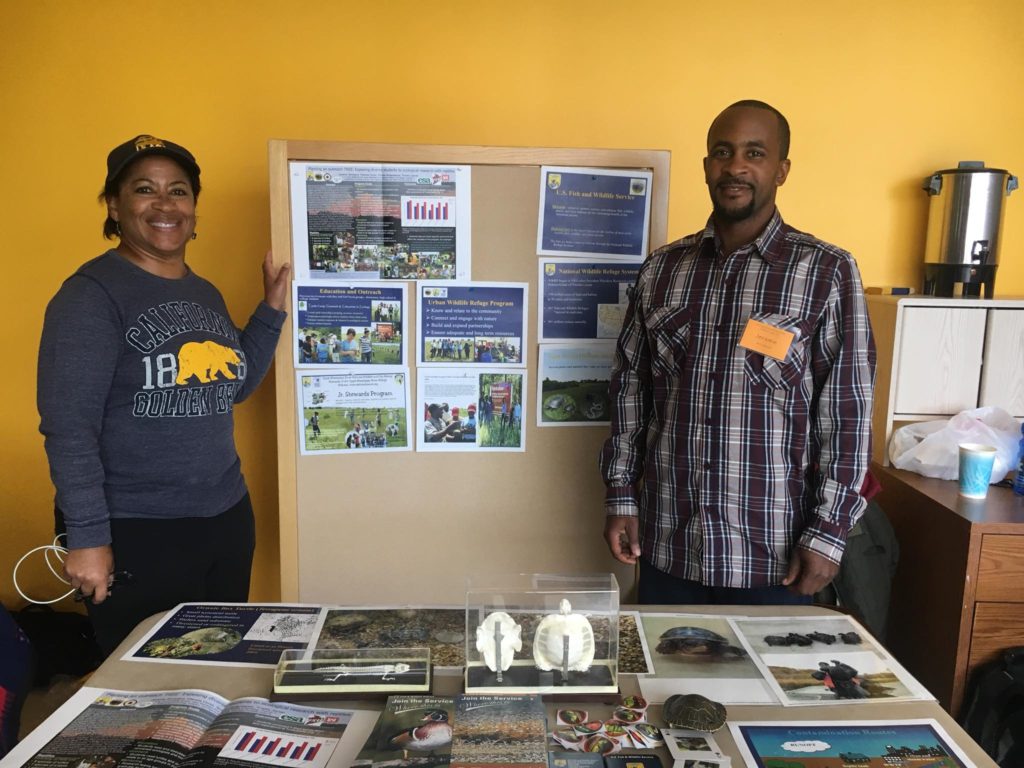
In the Fall of
Nominate Someone: COPUS 2018 Awards
Nominate a hero in your life!
Deadline is Monday, July 9, 2018 at midnight (PST).
Paul Shin Award
Each year an individual or individuals will be selected to receive the Paul Shin Award in recognition of dedication to communicating science to the public, whether in person, in print or online, or a combination. Read the guidelines and nominate now!
Judy Scotchmoor Award
This award is intended to recognize someone within the organization who has contributed at an exceptional and inspiring level of effort toward COPUS’s success. The award will be made when appropriate and not necessarily annually. Read the guidelines and nominate now!
Jasper Ridge Biological Preserve hosts a community open house – May 12, 2018
PRESS RELEASE FROM STANFORD UNIVERSITY
On Saturday May 12, 2018, from 10 am to 3 pm, Stanford University’s premier terrestrial outdoor research and teaching laboratory in the hills near Palo Alto—Jasper Ridge Biological Preserve—will be open to the public for discovery and exploration in one of California’s most diverse ecological settings. The last time a community open house took place was more than 10 years ago.
Formally established as a biological preserve by Stanford University in 1973 and a part of UNESCO’s Golden Gate Biosphere and the Santa Cruz Mountains Stewardship Network, the preserve is recognized internationally not only for the ecological, geological, and other kinds of research and teaching that have gone on there for more than a century, but also as a gem of nature hidden in the midst of Silicon Valley.
The purpose of this year’s open house is to help the surrounding communities and all who are interested learn about the preserve and the role it plays in Stanford’s mission and in regional and international nature conservation efforts. At this family-friendly event visitors of all ages will have the chance to interact with Stanford researchers and educators conducting work at Jasper Ridge, to take self-guided walks, and to visit exhibits that highlight both current and past research that has made the preserve world-renowned.
Among the special features of the preserve are its diverse vegetation, which include nearly every natural plant community found in west-central California. More than a thousand species of vascular plants, mosses, lichens and fungi have been recorded. Animal communities are no less impressive, with more than 280 vertebrate species (animals with backbones) that range from mountain lions at the largest to shrews at the smallest, plus an untold number of invertebrate animals—snails, worms, insects and so on—that are vital to healthy ecosystems.
This rich assemblage of plants and animals, combined with the remarkably diverse landscape that hosts them, provides an ideal natural laboratory in which to learn how nature works, which over the years has yielded—and continues to yield—important discoveries by researchers from Stanford and around the world. Currently about 60 different research projects are underway each year, some long-term, such as wildlife monitoring through a camera-trapping network that has been in place since 2009 and ant surveys that have been running more than two decades. Other studies play out over shorter time-spans (up to five years), such as determining how microbes affect subsurface soil processes, or how microscopic-size ecosystems evolve deep within sticky monkey-flowers. Educational use abounds, with more than 5000 people learning at the preserve each year, drawn from more than 20 courses at Stanford, from other colleges and high-schools in the area, and from the general public who during the academic year can reserve educational tours via the Jasper Ridge Biological Preserve website: https://jrbp.stanford.edu/visit.
The 1193 acres that now comprise the preserve have a rich historical legacy that will also be featured during the open house. Prior to the arrival of Spanish explorers, Muwekma Ohlone encampments and villages were numerous. After Spanish contact, ranching and timber operations eventually proliferated, and the town of Searsville grew only to be abandoned once Searsville Dam was completed in 1892.
Everyone is welcome to attend the family-friendly Jasper Ridge Biological Preserve Open House. The event is free, but a ticket is required, which can be obtained here: JRBP Open House Ticket. Please note that pets are not allowed and smoking is prohibited throughout the preserve, including outdoors.
Parking will only be available off-site at 2882 Sand Hill Road in Menlo Park, just east of the Sand Hill exit off of 280, about two miles from the preserve. Shuttle buses will run between the parking area and the preserve beginning at 9:30 a.m. Limited ADA parking will be available on-site at the preserve (located at 4001 Sand Hill Road, Woodside) by prior reservation, which can be made here: https://jrbp.stanford.edu/content/contact-us. Bicyclists will be able to park their bikes on-site at the preserve.
Further details about the event, including safety information, what to bring and what not to bring, can be found at: https://jrbp.stanford.edu/content/open-house-information.
A Student’s Perspective: 24 Hours in DC
By Layla Chamberlin
On October 14, 2017, Berkeley’s COPUS intern team participated in SEM Link’s annual STEM Career Fair in Washington DC (click here to see an awesome photo slideshow). The fair was organized for the greater DC community by scientist and educator, Tokiwa Smith. All were welcome at this event, but it particularly highlighted some outstanding local scientists and educators of color. With fun, hands-on activities, it invited students and families to celebrate their love of science, engineering, and math. Impressively, this event was 100% free, open to the public and easily accessible.
I joined the COPUS team this fall, and it’s been my first student internship experience at UC Berkeley. It was only a few weeks into the internship when our team accepted Tokiwa Smith’s invitation to participate in the SEM Link fair. I had never participated in a science fair nor visited DC before, and we were already boarding our plane to fly across the country before I could say “Coalition for the Public Understanding of Science!”
 We left Oakland around 7pm on a Friday, and after one layover, our plane finally landed in DC around 7am the next day — just as the sun began to rise. Being in a new city, far away from the Bay Area, was refreshing after so many routine days and laps around the Berkeley campus. As we crossed the bridge and entered the city, I heard the Jurassic Park theme song play in my head. (Thanks John Williams – that song still gives me chills). As a first-timer to the city, I was mesmerized by the magnificence of the massive colonial architecture on 14th Street and the modesty of the quaint brick homes behind the face of the historical epicenter. Our first stop was at a lovely local restaurant called Ted’s Bulletin where we hydrated, caffeinated and satiated ourselves before we went to the University of the District of Columbia, UDC, to set up for the fair.
We left Oakland around 7pm on a Friday, and after one layover, our plane finally landed in DC around 7am the next day — just as the sun began to rise. Being in a new city, far away from the Bay Area, was refreshing after so many routine days and laps around the Berkeley campus. As we crossed the bridge and entered the city, I heard the Jurassic Park theme song play in my head. (Thanks John Williams – that song still gives me chills). As a first-timer to the city, I was mesmerized by the magnificence of the massive colonial architecture on 14th Street and the modesty of the quaint brick homes behind the face of the historical epicenter. Our first stop was at a lovely local restaurant called Ted’s Bulletin where we hydrated, caffeinated and satiated ourselves before we went to the University of the District of Columbia, UDC, to set up for the fair.
When we arrived at the university, we were warmly welcomed by SEM Link’s founder, Tokiwa Smith. On the way over to DC, my team told me so many wonderful things about Tokiwa — meeting her in person did not fall short of my expectations. Despite me being in an unfamiliar place with a relatively new team, Tokiwa exuded a confidence that was comforting, relaxing and made me feel ready to work our booth. As we began neatly laying out our cellular diagrams, color-in cartoons of organelles, and microscope with slides, I was excited to see the other participating groups enter and set up their tables. There was everything from circuit boards to forensic science!
Around 10am, the students and families started to arrive. Despite the diversity in age, from three years old to juniors in high school, every kid that visited our stand eagerly asked interesting, perceptive and engaging questions. I was humbled to learn that so many of the kids there had already begun to code in their early elementary school classes, and many aspired to be engineers, astrophysicists, and neurosurgeons. It was even more inspiring to see these thirsty young minds working side by side with amazing scientists, engineers and teachers, all of which had given up their Saturday to bring science to the community.
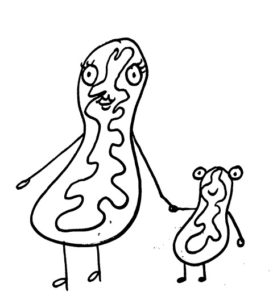 As the fair filled up and kids were racing around, fervently asking questions and dragging their friends to go with them to the various stands, we (the COPUS interns) began honing our skills as educators. I learned that this style of teaching, casual and curiosity-driven, is very effective in facilitating a scientific dialogue with children. In comparison to a classroom exercise, it allows kids to interact with the material on a much more intimate level. Our table didn’t come with a worksheet or a set of instructions, and kids could explore on their own terms.
As the fair filled up and kids were racing around, fervently asking questions and dragging their friends to go with them to the various stands, we (the COPUS interns) began honing our skills as educators. I learned that this style of teaching, casual and curiosity-driven, is very effective in facilitating a scientific dialogue with children. In comparison to a classroom exercise, it allows kids to interact with the material on a much more intimate level. Our table didn’t come with a worksheet or a set of instructions, and kids could explore on their own terms.
One girl, who was a second grader, sat with me for an hour and looked at each of the 25 microscope slides multiple times. Our slides were a slice through biodiversity – showing sections of tissues from mushrooms, plants, insects, and vertebrates. For each slide, I asked her what organism she thought it came from. And for each tissue type she observed, I told her a bit about how it functions in the organism. By the end of my hour with her, she began to make her own hypotheses as to why specialized cells are structured the way they are. Not all my interactions were this long, but no matter the length of time spent with each child, each conversation was just as charming and rewarding. Krystin Ventura, another COPUS intern, said that when she told one girl that the DNA in her mitochondria comes from her mother, the girl looked up at her mom, giggled and said, “That’s really nice of you.”
It was all over too soon and by 3pm we were wrapping up and heading out. By Sunday morning, we were already back in the SF Bay Area; concluding a quick 24-hour trip! But it was an experience I won’t soon forget. It was heartwarming to see both parents and students, and people of all genders and colors become engaged learners and equally share the same curiosity for science. For every child that held on tightly as they peered into our microscope, their parent or guardian also looked through the lens with deep fascination.
That morning, on the way to the science fair, I learned that our 67 year old Lyft driver had never visited any of the Smithsonian museums on the National Mall. (These public museums are completely free to all visitors.) Before retiring, he had worked in a government job located in the heart of the city. He was an African American man that had grown up in Washington DC — lived and worked there his whole life. He’d never visited a national museum, even though his son is currently a security guard at the new National Museum of African American History and Culture. He said it was due to the excessive traffic and tourism in the area. But some of our team wondered – as a child and teen, were his schools welcomed into the museums for tours? Did the museums make an effort to reach out to his neighborhood and welcome his community? As an adult, it’s easy to see why a person would choose to avoid traffic and touristy spots, but with the resources so close by, it’s telling that he’d never had an experience with them as a kid.
 DC has been a city with inspirational African American leaders and strong education institutions for a long time – Howard is a renowned university and has been around since 1867. However, in the early 1900s, President Woodrow Wilson made all federal government agencies segregated – schools, parks, and recreation facilities were segregated back then. This segregation stood until President Franklin Roosevelt was in office, when it began to be dismantled. But much was still segregated in DC all the way into the mid-to-late 1950s. And continued racism and injustices spurred riots in the city in the 1960s. By then, DC had become a city with a majority African American population – however, dating back to the 1870s, the U.S. president had dictated the local leadership. The people couldn’t elect their own city leadership! Thanks to a lot of activism in the community, in the 1970s, DC finally gained the right to elect their own mayor. And ever since, African American leadership has worked to transform the city into what it is today – a beautiful, vibrant metropolis with an awesome array of places to see and go.
DC has been a city with inspirational African American leaders and strong education institutions for a long time – Howard is a renowned university and has been around since 1867. However, in the early 1900s, President Woodrow Wilson made all federal government agencies segregated – schools, parks, and recreation facilities were segregated back then. This segregation stood until President Franklin Roosevelt was in office, when it began to be dismantled. But much was still segregated in DC all the way into the mid-to-late 1950s. And continued racism and injustices spurred riots in the city in the 1960s. By then, DC had become a city with a majority African American population – however, dating back to the 1870s, the U.S. president had dictated the local leadership. The people couldn’t elect their own city leadership! Thanks to a lot of activism in the community, in the 1970s, DC finally gained the right to elect their own mayor. And ever since, African American leadership has worked to transform the city into what it is today – a beautiful, vibrant metropolis with an awesome array of places to see and go.
With all this history in mind, it’s clear that a lot has changed in DC over the last 67 years. A child’s experience in Washington DC in the 1950s or 60s could have been very different from today. But even today, it’s readily apparent that there’s far more work to be done to make sure all people feel welcomed and respected in our public institutions and places of learning.
Seeing all the joy in the room at the science fair, I was struck with the importance of outreach events like the ones SEM Link provides. We can’t assume that just because there’s already museums in a community that all science education needs are being met. It’s ignorant to assume that all those who have curious minds will seek out established institutions for their learning.
This experience brought home to me the importance that we need to start opening doors when people are young, and make sure those doors stay open and welcoming throughout their lives. As we work to reimagine how STEM education can be, and prioritize equity and inclusion in our efforts – ensuring science is truly welcoming and accessible to all – we need to support organizations like SEM Link that are bringing science to the people and letting them know that science is for everyone.
Special thanks to Krystin Ventura for obtaining a grant from UC Berkeley (SOF Program) so that we could make the trip! And also thanks to COPUS and the UC Berkeley URAP Program for providing additional funds for materials and travel. And lastly, a very special thanks to COPUS member Tokiwa Smith, for creating this opportunity in the first place!
One more thing – I want to give a shout out to UDC, which has a fabulous campus! And two cheers for all of our country’s federally recognized HBCUs, or Historically Black Colleges and Universities.
STEM Career Fair in DC: Sweet Success
By Krystin Ventura
COPUS member and Founder & Executive Director of SEM Link (Science, Engineering, and Mathematics Link, Inc.) Tokiwa Smith is an expert in science education and outreach. She’s been organizing SEM Link’s signature STEM Career Fair for over 10 years in Atlanta, Georgia, and is expanding SEM Link’s influence each year. Last weekend, SEM Link held their second annual STEM Career Fair in Washington, DC, where over 100 attendees from the community were able to engage with hands-on science exhibits and meet STEM professionals from a variety of fields.
Tokiwa was motivated to start organizing these career fairs as a way to address the lack of hands-on STEM activities in many communities. She believes that the best way to positively influence the next generation of scientists is to illustrate the diversity of career opportunities in STEM to K-12 students and their parents. She says, “I wanted to create a space for parents to be a part of the STEM Career Exploration process for their children by having an event that they can bring their kids to and engage in hands on STEM activities together.”
In addition, she ensures that students who attend a SEM Link event will be able to interact with a diverse ensemble of exhibitors and presenters. “As an African American woman, I want to make sure that kids that look like me are able to take advantage of these types of opportunities,” she says.
New for this year in DC, Tokiwa graciously invited the COPUS member network to join in and table at the event. Representatives from the SF Bay Area COPUS hub (Monica Albe, Krystin Ventura, Yennie Shyu, and Layla Chamberlin) were excited to participate and had a wonderful time meeting all the kids and their families that day and showing them a little bit about cell biology. They are looking forward to next year already!
In the future, SEM Link is hoping to see STEM career fairs expand to other communities in the nation. Tokiwa is the author of A Guide to Hosting STEM Events, a resource she recommends to anyone interested in coordinating a STEM outreach event.
To help SEM Link connect even more students to STEM career fairs, make a financial contribution to the “Donate Your Lunch Money” Individual Donor Campaign.
“Science is Awesome. That is all.” t-shirt design by COPUS member David Ng.
Wildlife Corridors
NOVA and PBS: Wild Ways
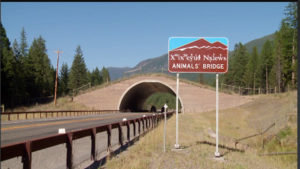
NOVA/PBS featured wildlife biologist Whisper Camel-Means and the Flathead Reservation in a “Wild Ways” look into wildlife corridors and conservation efforts.
Watch for the segment about 30 minutes in to hear more about “one of the most wildlife friendly road projects in the world.”
COPUS is excited to see this project highlighted — we’ve loved it ever since Whisper presented on it at the 2015 Yellowstone COPUS Unconference!
2016 Paul Shin Award
 By Keeley Takimoto
By Keeley Takimoto
COPUS is proud to announce Russell Ledet as the winner of the 2016 Paul Shin Award recognizing “unsung heroes” who have demonstrated commitment and passion in work related to Science, Technology, Engineering and Math (STEM) education/outreach, STEM equity/inclusion, and/or scientific literacy.
Looking at Russell today, you see a seemingly tireless and impeccably competent science professional. A Ph.D. candidate at the New York University (NYU) School of Medicine working long hours in prostate cancer research, he also mentors and serves on the board of directors for Clear Direction, the STEM mentoring organization he co-founded along with Julia Derk. It would be easy to assume he has spent his whole life in the field. But as Russell notes, when it comes to successful scientists, “everybody sees the building, nobody sees the foundation”.
Traditionally, the foundation of a STEM career has been characterized as a “pipeline”: a linear pathway through academia that future scientists enter as kindergarteners and emerge from as fully-fledged post-docs. The reality is much less straightforward, as Russell can attest. He had little access to working scientists or high-level STEM institutions growing up, making it hard to connect his experience to theirs. Without a “clear direction” into science, he instead enlisted in the US Navy after high school. It was there that he got to exercise his love of reasoning and analysis by working in cryptology and computer science, and it was there that he had his breakthrough about working in STEM:
“If [kids] don’t see what it’s like to live in that space, you’re talking to deaf ears.”
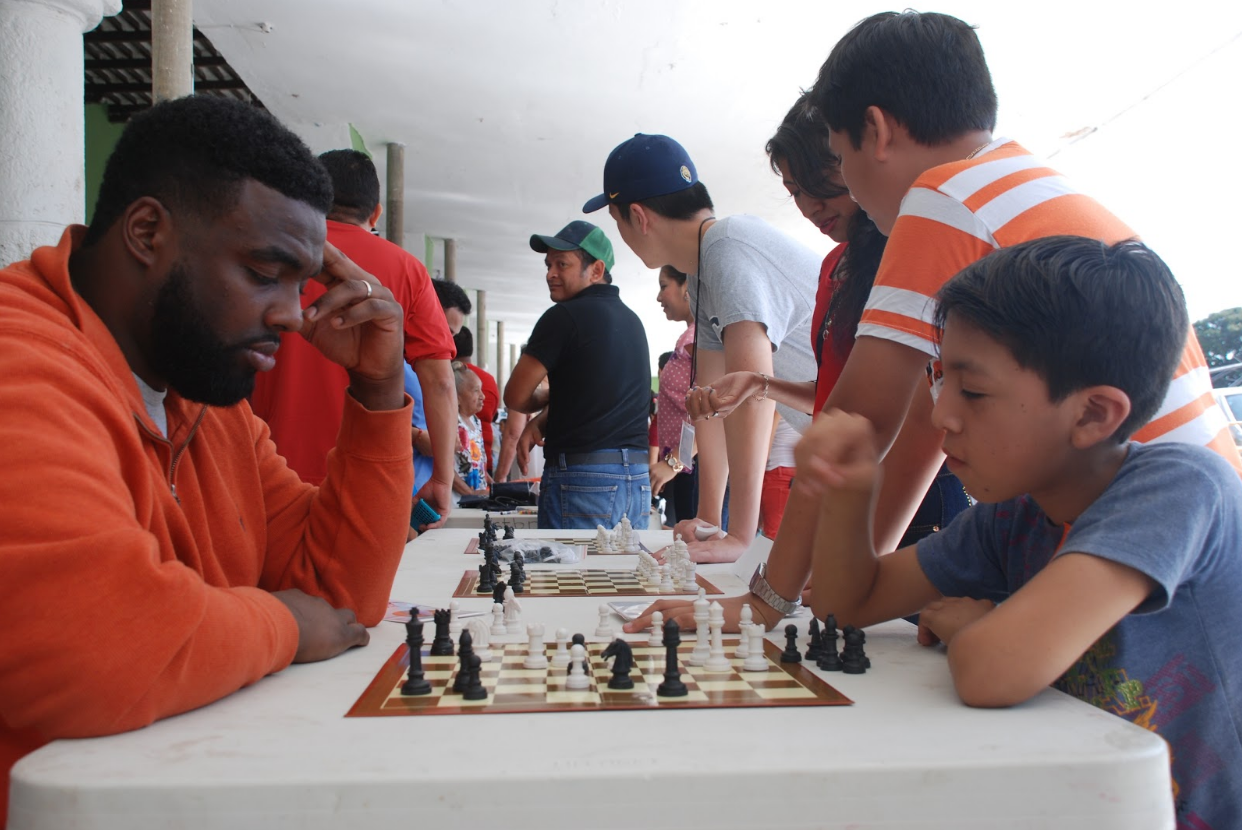 Matching wits with an opponent during the 2017 COPUS Unconference Day of Service in Ixil
Matching wits with an opponent during the 2017 COPUS Unconference Day of Service in Ixil
This idea was at the forefront of his development of Clear Direction Mentoring. Clear Direction works to help young people who, like Russell, don’t see an obvious path into the field. The program pairs PhD and MD/PhD students with high school juniors from underprivileged and underrepresented New York City boroughs with an expressed desire to study STEM. Clear Direction mentees explore diverse aspects of STEM in the real world, from attending lectures from experts on the financial, political, or industry aspects of STEM, to lunchtime discussions and experiments with other mentors and mentees.
The mentorship process seeks to “redefine mentorship” to create a relevant, personalized, and ultimately supportive program for each student. “For anyone to be a mentor,” Russell says, “they’ve got to believe that any kid could end up in their position one day…without [the mentee’s] viewpoint, how is our approach relevant?” Mentors are matched to students based on interest, and the experience can involve everything from hands-on lab work to advice on navigating high school during the two years of formal mentorship. Today, Clear Direction has 30 mentors working to inspire students in over 1,000 mentorship hours to date.
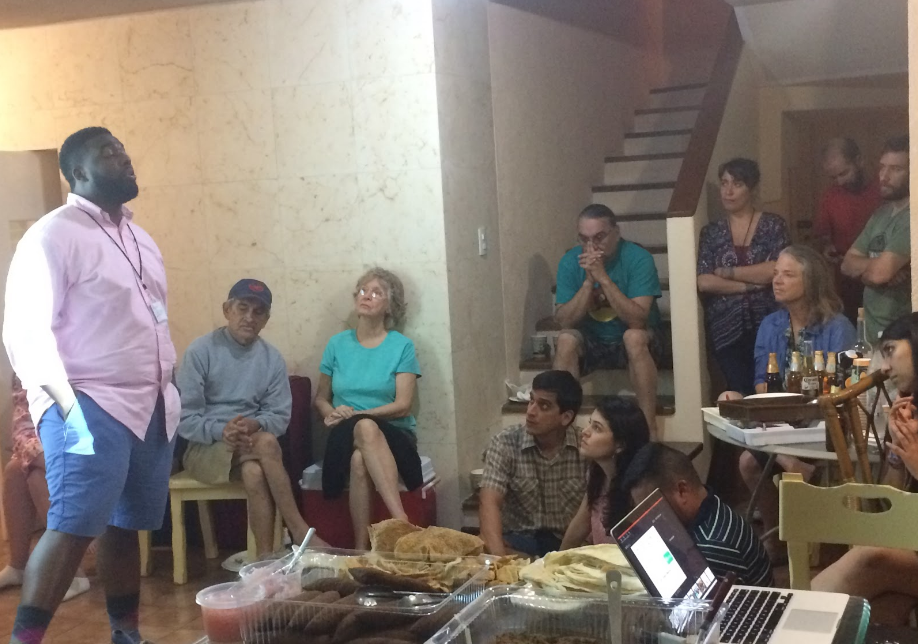 Russell presenting on Clear Direction at the 2017 COPUS Unconference
Russell presenting on Clear Direction at the 2017 COPUS Unconference
COPUS member Lance Powell, who served on the awards committee, states that the group was in complete agreement that Russell should receive the award. “We were impressed with the success he has had in reaching underrepresented high school aged youth in the sciences and matching them with mentors who they work with long term, and then following them to and through college,” says Lance, noting that the work Clear Direction does exemplifies the ideals of COPUS and Paul Shin. “As a result of his work, not only are more kids finding their passion in science, they are finding opportunities through science to improve their lives.”
Congratulations to Russell — COPUS thanks you for your tireless efforts in STEM and STEM outreach!
Ixil Science Fair – first ever!
COPUS Day of Service 2017: Ixil, Yucatán, Mexico
By Krystin Ventura
En español (thanks to Luis Abdala for the translation!)
What does a leaf look like under a microscope? How did an asteroid cause the extinction of the dinosaurs? How do bees make honey? The young science enthusiasts of Ixil, Yucatán can give you the answers!
On January 15, 2017, the Coalition for the Public Understanding of Science (COPUS) collaborated with the local non-profit, Proyecto Itzaes, to hold the very first science fair in the village of Ixil, Yucatán, Mexico. Proyecto Itzaes program coordinators, Jessica Cetz Dzib and Francisco Pech Cutz, were especially instrumental in orchestrating such a successful day. This event tied perfectly into Proyecto Itzaes’ mission to bring educational resources to rural Maya villages on the Yucatán peninsula, and to infuse the thrilling experience of discovery in these communities.
A diverse group of scientists and educators from Mexico, the United States, and Canada prepared interactive booths spanning chemistry, agroecology, mathematics, physics, and beyond, with the goal of inspiring a sense of scientific curiosity (see full list of science booths below). With hundreds of villagers in attendance — the majority of them children — it was a huge success: by the end of the day, several determined young Ixil engineers had even built a twenty-foot roller coaster out of paper towel rolls and masking tape.
Vital to the success of the event was the bidirectional communication of scientific and cultural learning, between scientists and educators, children and adults, and spanning four languages (Maya, Spanish, Salish, and English). Many of the hands-on activities had particular significance to the local economy and culture, thanks in large part to the involvement of scientists and educators from the region. Community members shared their knowledge of local plant species for use in traditional medicines and home remedies. A local beekeeper displayed one of his hives and shared his extensive knowledge of the trade, including the fact that the Melipona bees native to the area don’t sting! A lively dance festival, photography art show, choir performance from the local schoolchildren, and even a comedy act accompanied the science fair. Additionally, COPUS members brought in microscopes, art supplies, and science gadgets that were not only used for the science fair, but found a permanent home with Proyecto Itzaes for future events. Everyone came away with a greater appreciation for something — be it science, local culture, or the delight seen in a small child’s eye when they learn something new.
The idea for the Day of Service originated two years before at the COPUS Yellowstone Unconference. Members agreed that at future unconferences, we’d partner with nearby organizations to give back to the local community. Our first ever Day of Service in Ixil was an excellent start to this new tradition, and so much more than “giving back.” It was an opportunity for COPUS members to come away with new perspectives, fresh ideas, and a personal connection with a very special place. Just as exciting, this event drew in a new audience for Proyecto Itzaes, broadening awareness and support for their incredible work. And one thing we know for sure — the people of Ixil have some remarkable young minds and talented mentors that when given the opportunity, are powerful contributors in our scientific community.
Science Booths:
Mathematics — Proyecto Itzaes volunteer Aldo Escobedo and Jessica Cetz Dzib
Chemistry — Proyecto Itzaes volunteer Emanuel Koyoc
Traditional Medicine – Ixil volunteer Luisa Tec
Robotics — Proyecto Itzaes volunteer Saul and Eric
Agroecology — Proyecto Itzaes volunteer Lucia Cen
Health — Proyecto Itzaes volunteer Edgar Pech and Carmen Cetz
Bees — Proyecto Itzaes volunteer
Chess — Proyecto Itzaes volunteers, and COPUS member Russell Ledet
Roller Coaster Engineering — COPUS members Luis Abdala, Tokiwa Smith, Tom McFadden
Microscopes (dissecting, slide, and foldscopes) — COPUS members Christopher Alvaro, Stu Koretz
Properties of Water — COPUS member Lance Powell and Austin Ayer
Beans of the Yucatán — COPUS members Jorge Carlos Berny Mier y Teran and Kimberly Gibson
Bats of the Yucatán — COPUS member Diana Moreno
Birds of the Yucatán — COPUS member Daniela Tarhuni
Evolution Card Game — COPUS member David Ng
Surface Tension — COPUS members Bill and Ruth Swaney
Asteroid Impacts — COPUS member Lisa White
Perception Shifting Goggles — COPUS members Maya Bialik and Stephanie Sasse
Presentation on mass extinction — COPUS members Rodolfo Dirzo and Guillermina Gomez
Architecture and Art (with kids blocks) — COPUS members Monae Verbeke and Diego Roman
Nest/egg Camouflage Game — COPUS members Monica Albe and Mattias Lanas
En español
Día de Servicio 2017 COPUS: Ixil, Yuctán, México
Autor: Krystin Ventura
¿Cómo se ve una hoja debajo de un microscopio? ¿Cómo un asteroide pudo causar la extinción de los dinosaurios? ¿Cómo hacen miel las abejas? ¡Los jóvenes entusiastas de Ixil, Yucatán te pueden dar las respuestas a estas preguntas!
El 15 de enero de 2017, la Coalición para el Entendimiento Público de la Ciencia (COPUS, por sus siglas en inglés) colaboró con la organización no lucrativa, Proyecto Itzáes, para llevar a cabo la primera feria de la ciencia en la localidad de Ixil, Yucatán, México. Los coordinadores de programas de Proyecto Itzáes, Jessica Cetz Dzib y Francisco Pech Cutz, fueron claves en la organización de este exitoso día. El evento compaginó perfectamente con la misión de Proyecto Itzaes de llevar recursos educativos a pueblos mayas rurales y de inyectar en estas comunidades la emocionante experiencia del descubrimiento.
Un grupo diverso de científicos y educadores de México, Estados Unidos, y Canadá prepararon stands interactivos que incluyeron actividades relacionadas a química, agroecología, matemáticas, física, entre otros, con el fin de inspirar un sentimiento de curiosidad científica (ver abajo lista completa de stands). Acudieron cientos de pobladores de Ixil a la feria, – la mayoría de los cuales fueron niños – por lo que el evento resultó un enorme éxito: al final del día, varios jóvenes (futuros) ingenieros de Ixil terminaron de construir una montaña rusa de seis metros de largo usando masking tape y rollos de carton de papel de baño.
La comunicación bidireccional involucrando el aprendizaje científico y cultural entre científicos, educadores, niños y adultos, utilizando cuatro idiomas (maya, español, salish, e inglés), fue de vital importancia para el éxito del evento. Muchas de las actividades manuales e interactivas tuvieron un significado particular para la economía y cultura local, lo cual en gran medida se debió a la participación de científicos y educadores de la region. Miembros de la comunidad compartieron su conocimiento de las plantas locales usadas en medicina tradicional y para producir remedios caseros. Un productor local de miel desplegó una de sus colmenas y compartió su amplio conocimiento de esta actividad productiva, incluyendo el hecho que ¡las abejas meliponas nativas de la región no poseen aguijón! Un animado festival de baile, una diversa exposición fotográfica, un número por parte de un coro de niños locales de una escuela, e incluso un acto de comedia fueron algunas de las actividades que se sumaron a la feria científica. Adicionalmente, los miembros de COPUS trajeron microscopios, insumos artísticos, y artilugios científicos los cuales fueron utilizados en la feria y fueron donados a Proyecto Itzáes para su utilización en futuros eventos. Todos los participantes adquirieron una mejor apreciación de algún fenómeno, idea o sentimiento relacionado a ciencia o cultura local o bien simplemente la satisfacción de ver en los ojos de un niño el sentimiento positivo de aprender algo nuevo.
La idea del Día de Servicio se originó dos años antes durante la no-conferencia de COPUS en Yellowstone. Los miembros acordaron que en no-conferencias futuras COPUS uniría fuerzas con otras organizaciónes para aportar conocimientos a las comunidades locales. Nuestro primer Día de Servicio en Ixil fue un excelente inicio para esta nueva tradición y fue mucho más que solo “aportar conocimientos” a la gente local. Fue una oportunidad para que los miembros de COPUS desarrollaran nuevas perspectivas, ideas frescas, y una conexión personal con un lugar muy especial. De igual forma, el evento atrajo una nueva audiencia para Proyecto Itzáes, incrementando la conciencia y apoyo en relación al increíble trabajo que esta organización esta realizando en Yucatán. Y una cosa que sabemos es completamente cierta: la comunidad de Ixil posee destacadas jóvenes mentes y talensosos mentores los cuales tienen el potencial de contribuir a la ciencia si se les proporcionan las oportunidades.
Stands científicos:
Matemáticas – Voluntarios de Proyecto Itzáes Aldo Escobedo y Jessica Cetz Dzib
Química — Voluntario de Proyecto Itzáes Emanuel Koyoc
Medicina tradicional – Voluntario de Ixil Luisa Tec
Robotica — Voluntarios de Proyecto Itzáes Saul y Eric
Agroecología — Voluntario de Proyecto Itzáes Lucia Cen
Salud — Voluntarios de Proyecto Itzáes Edgar Pech y Carmen Cetz
Abejas — Voluntario de Proyecto Itzáes
Ajedrés — Voluntarios de Proyecto Itzáes, y miembro de COPUS Russell Ledet
Construcción de montañas rusas – Miembros de COPUS Luis Abdala, Tokiwa Smith, Tom McFadden
Microscopios (disección, muestras) – Miembros de COPUS Christopher Alvaro, Stu Koretz
Propiedades del agua – Miembros de COPUS Lance Powell y Austin Ayer
Frijoles de Yucatán – Miembros de COPUS Jorge Carlos Berny Mier y Teran y Kimberly Gibson
Murciélagos de Yucatán – Miembro de COPUS Diana Moreno
Aves de Yucatán – Miembro de COPUS Daniela Tarhuni
Juego de cartas de evolución – Miembro de COPUS David Ng
Tensión superficial – Miembros de COPUS Bill y Ruth Swaney
Impactos de asteroides – Miembro de COPUS Lisa White
Gogles que afectan la percepción visual – Miembros de COPUS Maya Bialik y Stephanie Sasse
Presentación de extinciones masivas – Miembros de COPUS Rodolfo Dirzo y Guillermina Gómez
Arquitectura y artes (con materiales para niños) – Miembros de COPUS Monae Verbeke y Diego Roman
Juego de camuflaje con nidos y huevos – Miembros de COPUS Monica Albe y Mattias Lanas
Meet Rodolfo Dirzo
Professor, Stanford University
Palo Alto, California, USA
Currently working on: Ecology and biodiversity science.
Talk with me about:
- Biology, Earth Science, Ecology, Zoology
- Science education — primary school, higher education
- Public outreach
- Research
Memorable STEM Moment: My participation in the new standards for science education, via the US national academies.
Notable Projects:
New standards for Science Education Report
My STEAM for Latina Girls Program
Meet Ruth Ann Hall

Director of Native American Studies, Nueta Hidatsa Sahnish College
New Town, North Dakota
Currently working on: indigenizing education.
Talk with me about:
- Anthropology, Ecology
- Higher education (undergrad/postgrad), public outreach, research
- Curriculum and outreach
My STEM Story: I became interested in STEM when I was a research assistant at my tribal college. One of the projects I worked on was water quality. I saw a value in having knowledge about my peoples’ natural resources.
Meet Austin Ayer
Fulbright Research Scholar
Puerto Morelos, Quintana Roo, Mexico
Currently working on: assessing the efficacy of marine protected areas in the Mexican Caribbean
Talk with me about:
- Graduate school
- Working in Latin America
My STEM story: A combination of my interests in biology and food, my undergraduate thesis used genetic techniques to examine the species composition of the American shark fin market. Using DNA extracted from fins purchased in San Francisco and from shark fin soup sold in Las Vegas, I was able to identify CITES listed endangered shark species within the domestic market.
Meet Luis Abdala Roberts
Assistant Professor, Universidad Autónoma de Yucatán
Mérida, Yucatán/México
Currently working on: Plant-insect interactions on wild cotton and tropical trees.
Talk with me about:
- Ecology
- Higher education (undergrad/postgrad)
- Funding options
- Grant writing
My STEM story: My interest in STEM mostly comes from my undergraduate experiences.
Remembering Cris Alvaro
Cris Alvaro will be greatly missed, they passed away in early 2018.
They had been based in San Francisco, California
Many people still share memories on Cris’s Facebook page.
It is with great sadness that we report the passing at age 29 of Cris Alvaro, an exceptionally bright and talented scientist and educator, and a beloved member of COPUS. Cris identified as a trans and non-binary person, using the preferred pronouns they/them/their. Cris was a community builder wherever they went, and had friends all over the nation. A GoFundMe campaign, which was created to honor their memory, exceeded its $30,000 goal.
Cris completed their PhD in 2015 from the Department of Molecular and Cell Biology, Professor Jeremy Thorner had been their PI. Before their untimely death, they had been an IRACDA Fellow and postdoc in Allan Basbaum’s lab in the Department of Anatomy at UCSF, where they studied differentiation of itch and pain signals in the central nervous system. “Cris Alvaro was one of the brightest, most warm-hearted, deeply caring, and beautiful human beings I have ever known,” said Professor Thorner. “They had the amazing talent of being able to uplift the spirit of every other person with whom they came in contact.”
Cris was also a popular performance artist, participating in performance pieces and drag shows around the SF Bay Area. They believed strongly that scientists should be encouraged to be well-rounded people — that scientists should not only be encouraged to do great research, but also have opportunities to improve their emotional intelligence, mental health, and pursue interests outside of science. They were incredibly supportive of underrepresented individuals in the sciences and were an activitist for the STEM LGBTQ community, as well as students and scientists who were first in their family to attend university, and communities of color.
Cris became a member of the COPUS community when they attended the 2017 January COPUS Unconference in Mexico. They were particularly interested in STEM education/outreach to vulnerable and under-served populations in the US and around the world.
Donations in Cris’s honor may be made to the Cris Alvaro Memorial Fund, which will send proceeds to trans mental health services and racial justice organizations selected by their family. www.gofundme.com/crisalvaromemorialfund
Cris’s words: My memorable moments that piqued my interest in STEM come largely from my exposure to reach during my undergraduate experience. I did not come from an academic family, and upon entering college I wasn’t aware of STEM job opportunities outside of medicine. My first research experience at Muhlenberg College, a small liberal arts college, opened my eyes to the world of research and there I was mentored by a faculty member and fell in love with the scientific process of experimentation and discovery. As an undergrad, I was fortunate to go to a conference where I was able to present my work and be a part of the scientific community. These experiences and the guidance and support I received through the faculty at my undergraduate institution were the memorable experiences I had and allowed me to believe I could be a part of the STEM community.
Meet William R. Swaney
Sanitarian, Elbowoods Memorial Health Center
New Town, North Dakota, USA
Currently working on: Food safety, disease vectors and injury prevention.
Talk with me about:
- Biology
- Environmental Health
- Education and outreach to indigenous communities
My STEM story: My first wildlife related job I listened to the signal from a radio collared grizzly bear and was hooked.
Meet Monae Verbeke
Senior Research Associate, Institute for Learning Innovation
Portland, Oregon
Facebook | Twitter | LinkedIn | [email protected]
Currently working on : a fantastic new science literacy tool, a Head Start program and National Park research.
Talk with me about:
- collaboration in grant writing
- initiating new STEM outreach programs
- increasing existing STEM outreach programs
My STEM story: I suppose there’s no one memorable STEM moment in my life that steered my interests, I was just always the girl in the mud and dog sidekick. It wasn’t until college that I realized there were others like me!
Meet Kimberly Gibson
PhD student in Horticulture and Agronomy, University of California, Davis
Davis, California
Currently working on: studying crop evolution and the impact of domestication on biochemical defense mechanisms in beans.
Talk with me about:
- outreach/finding an audience
- curriculum
- grant writing
My STEM story: One of the most memorable STEM experiences I have had was teaching ecology to sixth grade students from Eastside Preparatory School at Jasper Ridge Biological Reserve. Students were encouraged to ask questions and challenge themselves by thinking about advanced scientific concepts. Over the six week course, I was inspired by the enthusiasm and positive attitude with which my students learned material that is usually taught at the undergraduate level. I have tried to emulate them during my move from a social science background to a biological science PhD.
In 2016 I lived in Merida and worked with Proyecto Itzaes and Centro de Educación Ambiental de la Península Yucateca (CEAPY).
Meet David Ng
 Director and Senior Instructor, Advanced Molecular Biology Laboratory, University of British Columbia
Director and Senior Instructor, Advanced Molecular Biology Laboratory, University of British Columbia
Vancouver, Canada
Currently working on:
- research that looks at children’s impressions around creativity and how that fits within scientific contexts (as a way to bridge communities)
- exploring game base learning pedagogies (primarily via our Phylo Trading Card Game)
- a variety of lab outreach programs that focus on STEM gender equity content
- a new project about to start looking at how environmental games can influence advocacy behaviour.
Also, the lab I run is a fully functional science literacy facility with lots of different public programming
Talk with me about:
- Whether there are any specific strategies worth pursuing to make science outreach more effective in the age where US culture is so factionalized
- It would also be cool to check in with some of the teachers in the group and see if they have any thoughts about one of our upcoming Phylo decks (this one is on women scientists and engineers) – we have a beta version that we can play with.
My STEM Story: I’ll focus on a recent one that’s been dwelling on my mind: there’s been lots of discussion recently about whether being feisty or civil is the best course of action when trying to reach communities not normally associated with your value systems. Evidence would generally skew towards using civility, but science advocacy folks are generally passionate folks, and so getting outraged (and rightly so) feels more authentic. Is there a line we can toe to bring in the best of both elements?
Meet Jorge Carlos Berny Mier y Teran
Graduate student, University of California – Davis
Davis, California
Facebook | LinkedIn | Twitter | ResearchGate
Currently working on: improving drought tolerance and productivity of beans.
Talk to me about:
- Outreach
My STEM Story: A key moment that got me interested in/connected me with science was when I corroborated that Mendelian ratios are true in a segregating population for fruit color in peppers.
Member Spotlight – Tokiwa Smith
 Tokiwa Smith is a Chemical engineer, STEM Educator and social entrepreneur. She is the Founder and Executive Director of Science, Engineering and Mathematics Link Inc also known as SEM Link a nonprofit organization that she founded in 2005 that exposes youth to STEM and STEM Careers that has programs in Atlanta and the DMV (DC, Maryland and Virginia) areas.
Tokiwa Smith is a Chemical engineer, STEM Educator and social entrepreneur. She is the Founder and Executive Director of Science, Engineering and Mathematics Link Inc also known as SEM Link a nonprofit organization that she founded in 2005 that exposes youth to STEM and STEM Careers that has programs in Atlanta and the DMV (DC, Maryland and Virginia) areas.
She is also CEO and Principal Consultant for Kemet Educational Services, a STEM Educational Consulting Firm that she started in 2010 that focuses on ensuring that pre-college, community college and undergraduates students are prepared to pursue STEM careers. Tokiwa recently relocated back Atlanta, Georgia after spending 7 years in the San Francisco Bay Area, where she first connected with COPUS.
She recently attended her third Unconference, this January in the Yucatan Peninsula Mexico, where we were able to connect with her and learn more about her.
Tokiwa is a native of Miami, Florida and is an alumna of Florida Agricultural and Mechanical University (FAMU) a Historically Black College and University (HBCU). She has spent her career working for and developing STEM educational programs for precollege and undergraduate students to provide opportunities for them to be exposed to and be prepared for STEM careers. Through the work of her consulting firm, Kemet Educational Services she is using her background as an engineer and professional experience to bridge the gap between the STEM community and individuals and organizations that want to add STEM to their programming and/or learn how to engage kids in hands on STEM activities by providing them with strategies and tools to do so. Through the work of her nonprofit SEM Link, she is doing one of the things that she loves the most, exposing youth to STEM by engaging them in hands on STEM activities and connecting them with the STEM community.
Tokiwa’s nonprofit SEM Link, is currently in the midst of its “Its All About the Pi” Spring Fundraising Campaign , which ends on April 28th. The funds from this campaign, which individuals can make their tax deductible financial contribution online will support their programs, which include the 10th Annual STEM Career Fair and Exhibition on Saturday, April 15th at Georgia Tech. This event will provide K-12 students and their families with an opportunity to explore careers and meet and interact with professionals in these fields. In addition, Saturday, April 8th, Tokiwa will go back to her alma mater FAMU and along with SEM Link volunteers engage middle and high school students in a hands on chemistry activity at the STEM Expo on STEM Day hosted by the College of Science and Technology.
Some things she’d like to talk to other COPUS members about:
SEM Link
KEMET
Cooperation
All About the Pi
One of Tokiwa’s memorable Unconference moments:
One of Tokiwa’s most memorable moments from the unconference were from our outreach event. “This is the first time that we incorporated an outreach component to the Unconference. It was great to see us work together as a COPUS core as well as connect with the local STEM community to have a great STEM event for the kids. I met some great future STEM professionals from the Yucatan Peninsula that day, including a little boy named Omar that already knew that he wants to be a civil engineer when he grows up.”
By James Zhou
Meet Russell Joseph Ledet
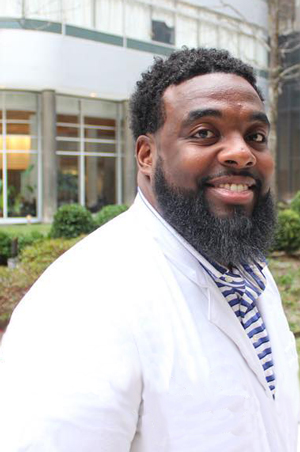
MD-MBA Student at Tulane School of Medicine
New Orleans, Louisiana
Currently working on: Obtaining a medical degree and an MBA.
Talk with me about (Louisiana/nearby connections preferred):
- Biology, Medicine, Chemistry
- Leadership development
- STEM Outreach
- Research
My Memorable STEM Moment: The development of Clear Direction Mentoring and #Reachback Mentoring, two organizations that truly represent what COPUS is about.
Meet Diana Daniela Moreno Santillán
Ph.D student, Instituto Politécnico Nacional
Mexico City, Mexico
Twitter | Facebook | Researchgate
Currently working on: research into the immune system of bats.
Talk with me about:
- grant writing
- meetings
- collaboration research
My STEM story: I have been working in the evolution of the adaptive immune system in mammals for the last 4 years. During my masters I studied the variation of the MHC-II in blue whales from Baja California, Mexico. Now, for my PhD I am studying the transcripts of the MHC-I and the T cell receptors in five families of Bats from Yucatan. This is a huge challenge for me because for the first time I am learning and doing computing analysis.
A great experience for me was the first time I went to an international meeting and presented my thesis advances. I got many questions and I met a lot of researchers that were interested in my results and shared with me their knowledge and experience. That was the day I realized I wanted to do for the rest of my life.
A Big Thank You

COPUS gives a big, heartfelt thank you to the lovely town of Ixil, our awesome collaborators at Proyecto Itzaes, and all our supporters for making the Science Fair in Ixil, Mexico possible! We’ll be sharing more stories about that and our Yucatán unconference soon….
Meet Jen Collins
 Jen Collins is an Education Specialist at the Smithsonian National Museum of Natural History.
Jen Collins is an Education Specialist at the Smithsonian National Museum of Natural History.
Her STEM education and outreach work (mainly in the biological/zoological sciences) is for public audiences. Jen has been a long standing member of COPUS and we’re grateful for her contributions to large collaborations (like the UCMP’s Understanding Science and Understanding Evolution websites).
She’s currently focusing on 1) training volunteers of the Sant Ocean Hall how to effectively communicate about how science works and climate change in the context of exhibits and interactive activities; 2) connecting researchers to education and outreach efforts; 3) exploring ways to use objects to engage visitors in conversation.
Some things she’d like to talk to other COPUS members about:
- Evaluation
- Visitor engagement strategies
- Working with volunteers
- Science education researh
Jen’s located in Virginia and is interested in connecting with folks all over the map.
One of Jen’s memorable STEM moments:
“Watching engineers, scientists, lab techs, and welders gathered around a drill pipe onboard the JOIDES Resolution trying to solve a problem with the deployment of a tool into the seafloor. They talked, pointed, talked, tweaked, then finally brought out the duct tape!”
Connect with Jen:
- Facebook: https://www.facebook.com/jennifer.johnsoncollins.5
- LinkedIn: https://www.linkedin.com/in/jennifer-collins-4b43b131
- Via email: [email protected]
Support Scientific Empowerment!
Donate here to help us reach our goal: $10,000 for the Mexico Unconference and Science Fair.
As of January 11th, we’ve raised $5,050. Thanks to all of you who’ve donated so far! Let’s keep it going — it’s not too late to give a gift!
Your donation allows us to connect science educators and activists from around the United States with science super stars and students in the Maya community of the Yucatán Peninsula of Mexico. Donations of any amount are greatly appreciated — and check out our awesome rewards:
- $50 = after the January unconference, receive a thank you card with a group photo of us all in Mexico.
- $100 = after Mexico, receive a thank you card and a drawing from one of the students from the science outreach event.
- $250 = after Mexico, thank you card, and a penpal opportunity with a Proyecto Itzaes budding scientist.
- $500 = COPUS will give you or your organization/company a shout-out on our website and social media (with links to your site and their logo). Link and logo will stay on our website for one year from posting date.
- $1000 = Cindy Wilber will give you a personal tour of ‘Hidden Yucatan.’ Airfare not included, but housing (right near beach) and food and a tour guide is!
Email us if you’d also like to donate school/science materials for the Maya community.
We’ll be posting updates about our fundraising goals each week, so check back here and please share with your friends!
COPUS is a completely not-for-profit, volunteer network of individuals and organizations across the nation focusing on scientific literacy, STEM (science, technology, engineering and math) education, and STEM equity/inclusion. Funds are used for fostering community and collaborations in STEM education (such as our unconferences) or providing educational materials to communities in need. Donations are collected through our University of California at Berkeley hub and are 100% tax deductible.
A huge thank you to Tom McFadden of SciencewithTom for creating our beautiful crowdfunding video. And special thanks to Tokiwa Smith of SEMLink, Edward Samaniego of ES Visual Studies, Diego Román, and all other COPUS contributors for the awesome pictures and videos used.
Gearing Up for the 2017 Unconference…
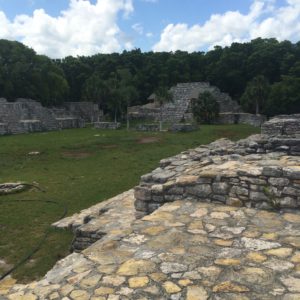 Where’s our next unconference? The Yucatan Peninsula in Mexico!
Where’s our next unconference? The Yucatan Peninsula in Mexico!
This unconference is going to be incredible, and styled a little different from the last one. The new style will allow all attendees to really get to know each other and bond not only over activities and presentations, but through shared experiences and interactions with the local community.
It is a casual, warm, intimate experience for around 25-30 people to share their expertise, best practices, ideas for innovations — and hopefully inspire cross-disciplinary/cultural/regional collaborations. As our mission states, “COPUS is a diverse trans-disciplinary network of individuals and organizations dedicated to public engagement with science. Members represent a wide range of stakeholders and constituencies who work together to articulate a shared vision and accelerate our collective impact.”
This gathering is several things:
- A celebration of STEM education/outreach and the individuals that work tirelessly to promote it.
- An opportunity for the COPUS members to share and learn from the local scientists, educators, and community members through an interactive STEM fair event. Our goal is to empower the local community with science and science connections — but to learn from their expertise and gain understanding from their experiences and perspectives too!
- An opportunity for professional development and networking.
- An opportunity for us all to share with each other and recharge for the year – bringing home cool new ideas and possible connections/ideas for grants, etc.
We will be in the town of Chicxulub Puerto about 35 km from the north side of Merida and about 45 minutes from the airport. For this unconference, we’re partnering with Proyecto Itzaes to connect in with the local community of teachers, scientists, and families.
Tentative Schedule (subject to change):
Note: through out the unconference, we will be focusing on providing professional development and networking opportunities for all attendees.
- Friday, Jan 13th: arrivals and evening networking social
(for those that are here for the full day, we’ll hold a strategic meeting, review our 2016 COPUS events/activities, prepare for Day of Service) - Saturday, Jan 14th:
1) sharing of expertise & member activities from 2016
2) finding points of overlap (grants and collaborations)
3) working group formation for 2017
4) award ceremony & presentations (Paul Shin & Judy Scotchmoor Awards) - Sunday, Jan 15th: Day of Service
interacting with local scientists and teachers, science fair with the Maya community - Monday, Jan 16th: Meeting wrap-up, departures
for those that are here for the full day, we’ll have a “Day of Action” —
1) data sharing for projects
2) make headway on working group action items
3) reporting on Day of Service for website/social media & grants
SCOPE
Cynthia Kramer, SCOPE founder and COPUS member, is committed to connecting the amazing resources in Missouri and other states across the nation, to parents and teachers, and by invoking interest in kids to excite them about STEM.
Scope’s Mission: To share information and connect real life opportunities in Science, Technology, Engineering, Art and Math (STEAM) related: activities, programs, organizations, scholarships, internships and workforce opportunities; in order to better the lives of citizens, our economy and global leadership in innovation.
There’s so many things you can do at the SCOPE website! These resources are especially awesome for folks in the midwest (Iowa, Missouri, and surrounding areas).
- Activities
- Programs
- Camps
- Resources for home schooling
- Higher education resources
- Financial aid resources
- Internships
- Info on STEM Careers
Meet Monica Albe
Graduate Student Services Advisor, UC Berkeley
Berkeley, California, USA
[email protected] | LinkedIn |Facebook | Twitter
Currently working on: helping graduate students in the Department of Integrative Biology.
Talk with me about:
- communications
- equity & inclusion
- science education
My STEM Story:
Monica Albe is a Graduate Student Services Advisor in the Department of Integrative Biology at UC Berkeley. She has worked closely with the Berkeley Natural History Museums for many years, and she’s also worked with many of the other science departments and institutions on campus through Science@Cal. Before becoming an advisor, she was an external relations specialist on campus, focusing on communications for all the science and math departments in the College of Letters & Science. She has a background in biology and has been at UC Berkeley since 1999.
Remembering Lee Allison
Regretfully I can’t remember how we actually first met. It seems that he was just always there. Lee had an impressive geology career and was serving as the State Geologist and Director of the Kansas Geological Survey during the critical years of cyclic episodes of creationism that overtook the Kansas science standards. So most certainly our paths crossed at the National Conference on the Teaching of Evolution in 2000 if not before.
But in 2005, Lee Allison walked into my office at UC Berkeley, sat down, and said “Judy, we’ve got to do something about these anti-evolution guys – they are anti science!” That was all it took to trigger the idea and then the actions that gave birth to COPUS. That’s who Lee was. He had an unmatched and undeterred energy and enthusiasm about him. Plus, he had an overwhelming passion for understanding the history of our earth and a deep-lying respect for the science that could provide the answers and stimulate more questions.
It seemed that with every encounter with everyone, Lee sparked creative and expanded thinking. That was as true late in his career as it was at our Berkeley meeting in 2005. So before I knew it, we had secured funding from NSF to bring in some folks for brainstorming a national initiative with three goals:
- developing a shared appreciation of science, its contributions to the quality of life, and its underlying role in advances in technology and engineering
- informing and engaging the public in and about science, its process and products
- making science more accessible to everyone
And we even came up with a name – the Coalition on the Public Understanding of Science – COPUS.
Soon there was a COPUS Core of people sharing ideas of concrete steps toward those lofty goals. This resulted in the Year of Science 2009 and the crazy idea of holding an unconference and Lee found the perfect venue – the Biosphere. There in the Arizona desert, the COPUS Core expanded into the COPUS Corps and an annual unconference became the norm… all because of a guy with an impish grin, a huge heart, and an amazing energy.
It was always fun and comfortable being around Lee – whether at a meeting of the minds in DC or sharing a beer at GSA or hanging out with COPUS friends at an unconference. You just wanted to be around him. He will be sorely missed.
By Judy Scotchmoor
Meet Tom McFadden
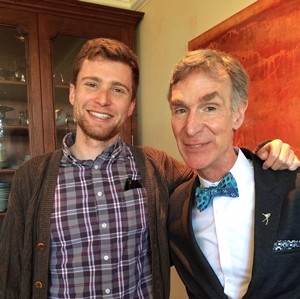
8th Grade Science Teacher (The Nueva School) and Founder of “Science With Tom”
San Francisco, California
Twitter | Instagram | Youtube | Facebook | Website
Currently working on: Science communication video workshops for scientists and postdocs, and a “freestyle app” that allows students to creatively engage with science through rap.
Talk with me about:
- Biology, Chemistry, Ecology, Health, Physics
- K-12 education, higher education
- Science Communication Workshops for Scientists/Postdocs
- Professional Development for teachers and districts
- Business management of a small organization
My STEM Story: When I first learned about protein synthesis and realized that every cell in our body was a kaleidoscope whirring factory of micromachine creation. And when I first deeply understood evolution and the connectivity of all living things.
Projects:
SWT Scientist Interview Show
Science History Rap Battles
Science Rap Academy
SWT Website
Meet Marcos Chu
Marcos leads a group of professionals that volunteer their time to build resilient learning communities. They build robots using the same materials and equipment students use when participating in robotics activities and competitions. They are platform neutral and do not favor a particular robotics competition organization — they encourage youth to follow their dreams in the PRESENT time, looking at the PAST for inspiration and the FUTURE for hope for a better tomorrow. Marcos and his team believes in laying the foundation for the future, and their hope is to inspire children that will become professionals of tomorrow to become better problem solvers.
Three words that describe Marcos:
Steampunk, demo robots, brasileiro.
The dots Marcos connects:
Marcos’s hope is to be able to network with other energetic individuals that would be interested in building STEM learning communities that are geographically no more than 30 minutes from each other along BERSDT STEM Corridor that will be parallel to old U.S historical highway 66.
Meet Mattias Lanas
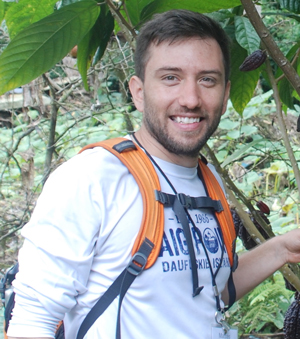
Science illustrator
Bogotá, Colombia
Facebook | Instagram | Website
Currently working on: a Fulbright scholarship research project in France studying scientific illustration at Paris’ Muséum National d’Histoire Naturelle.
Talk with me about:
- Biology, Earth Science, Ecology, Zoology
- Public Outreach, Research
- Curriculum
- STEAM
- Professional development
My STEM Story: I became very interested in STEM and STEAM education at Jasper Ridge Biological Preserve at Stanford, California. I was working with students explaining biological concepts out in the field, and seeing the expressions of awe and wonderment with which our kids took in their surroundings—as if they were seeing the natural world in a whole new light—made me certain I wanted to teach science. I have always been passionate about art, too, and have found that practicing diligent observation through nature journaling encourages interest in and connection to nature. I am a huge advocate of STEAM projects that encourage kids to become curious individuals and successful future stewards of the planet.
Notable Projects: I am very interested in promoting foundational natural history topics like botany, geology, and phenology that are so integral to our understanding of more theoretical sciences but which are often marginalized in this day and age. I approach these subjects within the context of scientific illustration and field sketching, which in my experience works really well to prime students for scientific observation and discovery.
Meet Roger Conner
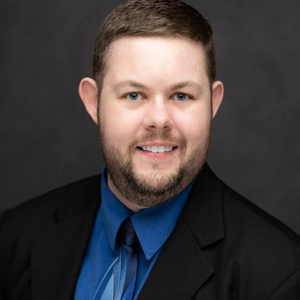
Executive Director, SciComm Summit / Head of Marketing, WorkMonger & TrulyHired
Greenville, North Carolina
Twitter | LinkedIn | Facebook | scicommsummit.com | Twitter: SciCommSummit | Facebook: TheSciCommSummit
Currently working on: Launching an online SciComm Summit with the goal of bringing together science communicators no matter where they are located with the goal of improving the capacity to communicate science effectively in order to foster the public understanding of science.
Talk with me about:
- Astronomy, Biology, Chemistry, Computer Science, Earth Science, Ecology, Health, Psychology — outreach and communications across STEM fields
- Speaking and being involved with the SciComm Summit
- Leveraging technology to make science more accessible
- Agnotology, misinformation, and science communications
- Creative collaborations to foster the public understanding of science
My STEM Story: I worked with the Duke Marine Laboratory researching sea snails. We discovered that antifouling paints were causing snail populations to collapse. I knew immediately that we needed to share our findings with the public in order to enact change.
Ever since that moment I have been involved in connecting scientists with the general public with the vision that everyone can and should make decisions about their life, career, community, government, and environment based on sound scientific understanding.
Projects: Prior projects include directing a Gates Foundation program that uses immersive learning technologies for NGSS and Common Core delivery and assessment, founding a regional science and technology learning center, developing an online STEM learning network across rural NC, and leading the educational arm of SkyCube, the first crowdfunded satellite launch.
Meet Rocio Sanchez

Graduate Student Affairs Manager
Bay Area, California, USA
Currently working on: Supporting Plant Biology and Microbiology (PMB) graduate students and recruiting STEM undergraduate students to PMB doctoral programs.
Talk with me about (nearby connections preferred):
- General All Stem, Plant Biology, Microbiology, Biological Sciences, Engineering
- Higher education (undergrad/postgrad)
- Creating inclusive STEM spaces (i.e laboratories)
- Supporting STEM students of color in doctoral programs
- Fundraising for student support and STEM outreach efforts
My STEM Story: I love to hear students in my school eagerly discussing the science lesson they have just had in class whether it is my physics class, or another subject. The enthusiasm and eagerness in their voices gives me hope for the future.
Rocío Sanchez is Manager of Graduate Student Affairs with the Dept of Plant & Microbial Bio at UC Berkeley. In this role she advises doctoral students through academic and research milestones. As an adviser, she both creates and connects students to services and resources that support personal, academic, and professional development. She is active in efforts to diversify STEM fields through outreach, recruitment, and retention programs for undergraduate and graduate students at CAL. These include SACNAS (Society for Advancement of Chicanos/Hispanics and Native Americans in Science) and ABRCMS (Annual Biomedical Research Conference for Minority Students), and Amgen Scholars programs. She serves on graduate admission committees and promotes diversity through evidence-based approaches and meaningful conversations with faculty, students, and administrators.
Meet Morgan Thompson
Morgan Thompson is a geneticist, but her passion is informal science education. She is exploring modes of evidence-based dialog & engagement to create new (e.g. Science Presentation as a Performing Art, Emerson College Science Communication Collaborative, etc.) & develop existing programs (e.g. Voice of Young Science USA, Science in the News, Ask for Evidence USA) that provide communication training & public service. Morgan is Assistant Director of Career Development at University of Massachusetts Medical School where she trains Ph.D. students & postdocs in communication & professional skills (http://career.umassmed.edu). She serves on the Public Outreach Committee of the American Society for Biochemistry & Molecular Biology. Morgan enjoys kayaking, backpacking, gardening, cooking, & random crafts.
Three words that describe Morgan:
Experimentalist, maker, nurturer
The dots Morgan connects:
Morgan connects scientists, particularly early career researchers, to opportunities for training in communication and direct engagement in their broader communities.
Meet Jessie Herbert
Jessie Herbert is the STEM Education Program Manager at the University of Montana spectrUM Discovery Area. Jessie earned her bachelor’s degree in elementary education from the University of Montana in 2008 and has worked in informal education since then. She became a certified SciGirls trainer in 2011 and trains educators to implement gender-sensitive curricula in their classroom. She also currently co-directs the Montana Girls STEM Collaborative. As a passionate learner, Jessie enjoys teaching and learning about all types of science. She is currently pursuing her Masters in Education from the University of Montana.
Three words that describe Jessie:
Energetic, Passionate, Enthusiastic
The dots Jessie connects:
Connecting people, Connecting programs
Meet Yvonne Tsai

After many years of mentoring FIRST Lego League and then FIRST Robotics, Yvonne had a hand in starting NH TechFest to showcase STEM careers to middle and high school students . This annual festival brings in industry and university innovators to do hands-on demos and talk about what skills are necessary for the jobs of the future. NH TechFest hopes to inspire the next generation of innovators and scientists by showing off the latest in technology and providing real-life role models for teens.
Three words that describe Yvonne:
Fun-loving nerd, instigator of social activities, science and math can explain all
The dots Yvonne connects:
Yvonne connects teens to STEM professionals, show the relevance of STEM education and future careers, and connect educators and industry to find out how we can grow our future workers.
Meet Whisper Camel-Means

Whisper Camel-Means is a Wildlife Biologist working for Confederated Salish and Kootenai Tribes Wildlife Management Program. She started her biology career with CSKT as a Biologist Trainee in 1997 while studying Environmental Studies at Salish Kootenai College in Pablo, MT. After receiving a Master’s of Science degree in Fish and Wildlife Management, she was awarded a fellowship from The Wildlife Conservation Society (WSC) and The Western Transportation Institute (WTI) to conduct a master’s project on US Highway 93 Pre-Construction wildlife movements. While in Bozeman she was employed by WTI to participate in other highway and wildlife related projects, including an animal detection system prototype project in Yellowstone National Park and a wildlife warning signing system on Bozeman Pass.
Outreach and education is an important part of her position at SKC. Along with other biologists, she strives to educate young and old about wildlife and wildlife issues for all to live more harmoniously with nature. SciNation on the Flathead Reservation is a new program that is gaining traction and an excellent reputation for bringing science and STEM/STEAM learning to children on the Reservation. With climate change looming on the horizon, CSKT has been planning for the potential effects on the Flathead Reservation. Whisper has been actively involved in the CSKT Climate Change Oversight Committee. She is an active member of The Wildlife Society, on the national and state level; with achievement of her Certified Wildlife Biologist status and past president of the Montana Chapter. She is a member of the Native American Fish and Wildlife Society. Whisper is past Chair and current vice chair of the Flathead Reservation Fish and Wildlife Advisory Board.
Three words that describe Whisper:
fun, active, Libra
The dots Whisper connects:
“I get along with a wide variety of different types of people. I am outgoing and able to communicate or ask for clarification. I can talk to adults as well as children. I am excited to work with others and share what I know.”
Meet Jenny Cutraro
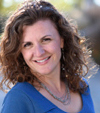 In her own words: “Every report card I brought home from grade school noted “Is too talkative during class,” but I prefer to translate that to “Enjoys communicating with her classmates.” Today, I’ve channeled that love of talking into a career in science communications and education.”
In her own words: “Every report card I brought home from grade school noted “Is too talkative during class,” but I prefer to translate that to “Enjoys communicating with her classmates.” Today, I’ve channeled that love of talking into a career in science communications and education.”
Jenny is a producer for youth and family programming and is currently the co-managing editor at SciStarter. She has been a writer and editor at WGBH in Boston, where she produced materials for the Emmy-nominated PBS KIDS ecosystem science program PLUM LANDING. You’ll sometimes find her writing about science, education, and creativity for outlets including The Boston Globe, Science News for Students, and the New York Times Learning Network as well. When she’s not talking about science, you’ll find her kayaking with her family, cheering for the Green Bay Packers, and looking for slimy things under logs.
Three words that describe Jenny:
Curious, kayaker, nerd
The dots Jenny connects:
Science + k-12 education + journalism
